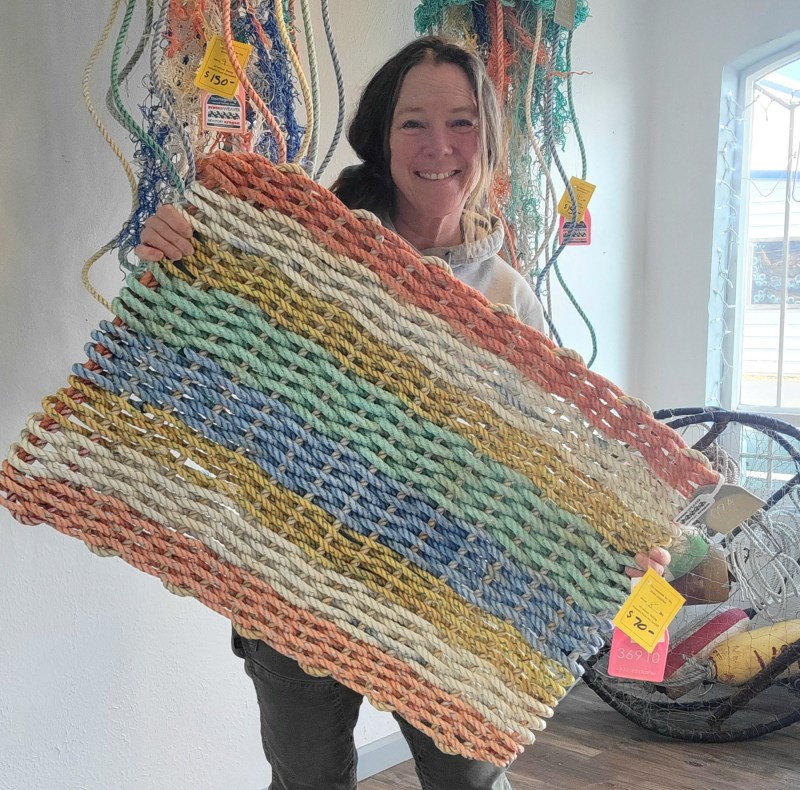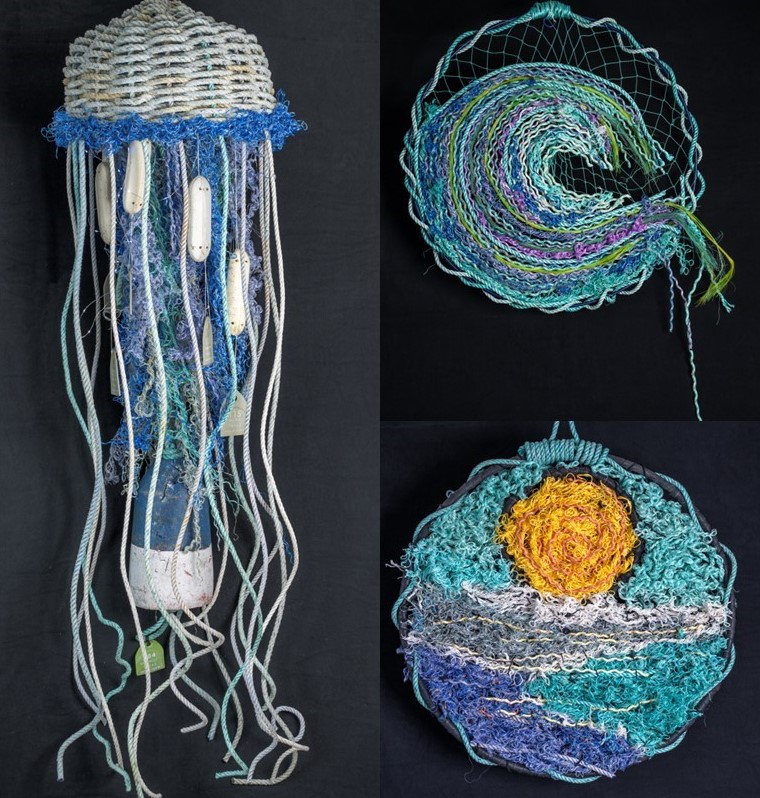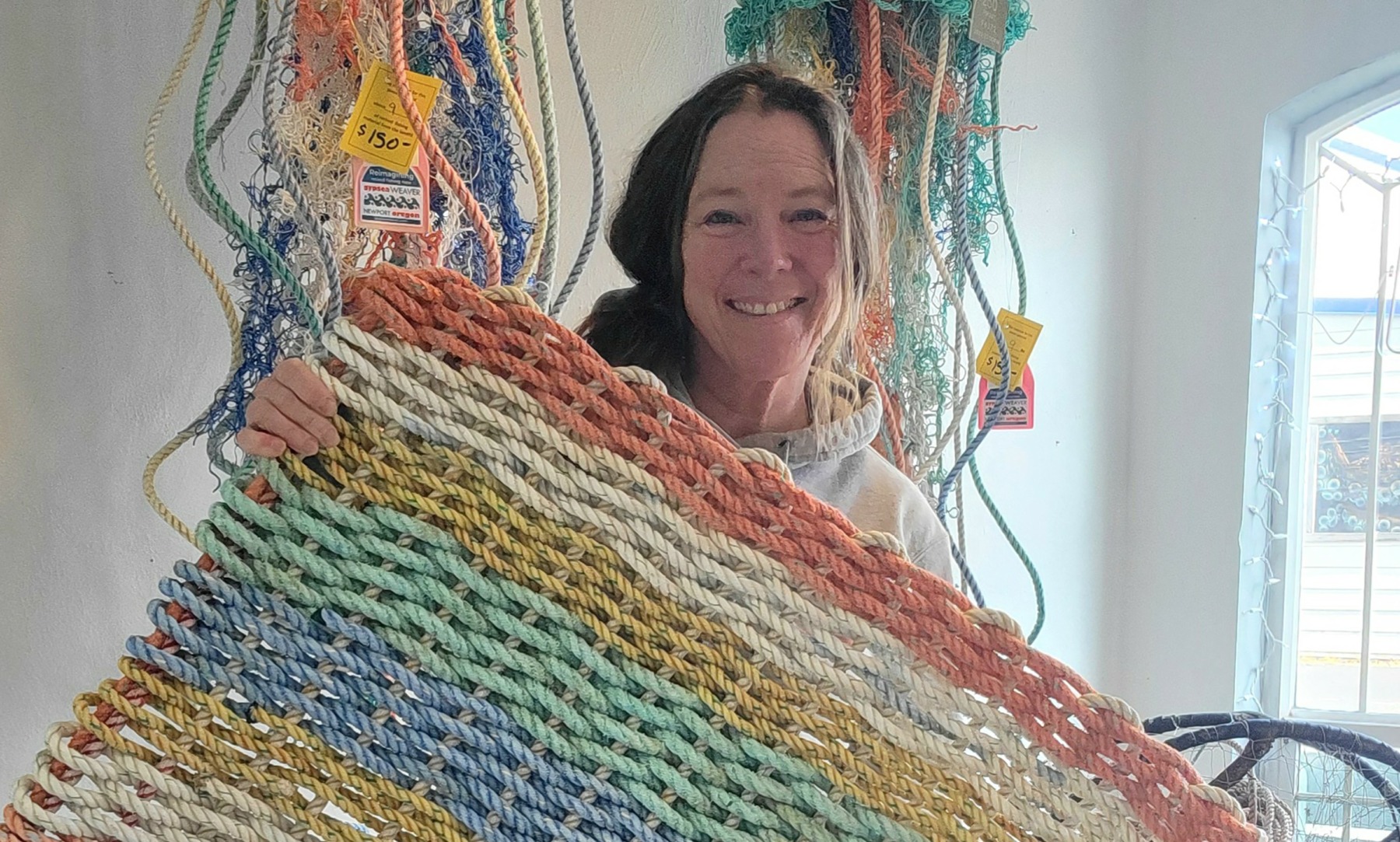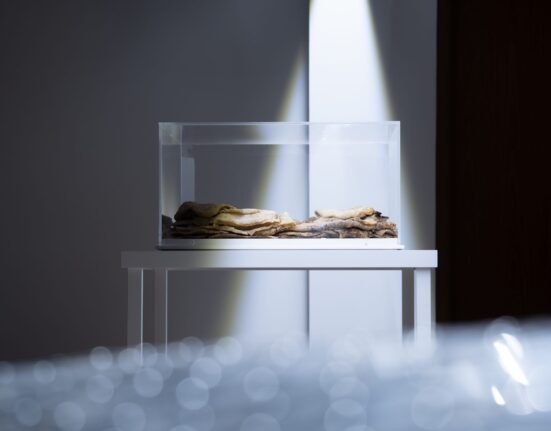
A few years ago, while looking for inspiration for creating what she calls “beach garbage art,” Newport artist Rebecca Hooper stumbled on doormats woven from commercial fishing line. She knew she’d found what she was looking for — not an idea for using garbage from the beach but from trash bins. Today, demand for her work is so great she can barely keep up.
Hooper also is starring in her first solo art exhibit, which opened last week and runs through Aug. 4 in the Lincoln City Cultural Center’s Fiber Art Studio/Gallery.
We talked with Hooper about the art she discovered when there wasn’t much else she could do and how it led to a successful gig as both artist and retailer. The interview has been lightly edited for clarity.
How did you come to the art of weaving?
Hooper: I started weaving about 18 years ago as a hobby as a single mom. You don’t really have time for a life, so I just started weaving at home. I taught myself out of a library book and it grew from there.
In 2021, six years after moving to Newport from New Mexico, you discovered doormats made from rope and had that “eureka” moment.
Yes. I thought about going to the beach and getting garbage to create art from and have it shown here in Newport — but does that really represent Newport? It doesn’t. When you go to the beaches here, they’re not filled with garbage.
But the Port of Newport is the heart and soul of Newport. I decided instead to support local fishermen, who really don’t want to throw anything away, by providing an alternative to the landfill. The doormats inspired me to make everything from Dumpsters rather than beach trash. A positive message rather than negative beach trash.
You researched the history of the doormats.
They were designed in the ‘70s by Dave Carter in Maine. He sold rope to lobstermen and wanted to sell more rope in the off season. Then, the feds banned a type of lobster line, because it was causing a conflict with the endangered North Atlantic right whale. There were piles of discarded rope on the docks. So, he taught families how to weave doormats by using old rope. That started a trend to use retired and discarded fishing rope for art.
A lot of people make these doormats but don’t acknowledge the original. As an artist, I think it’s really important to give a nod to your inspiration. Most things are not developed out of thin air but were inspired by other things.

But you didn’t stop at doormats.
A friend in California and I worked out how to make baskets, and I designed this giant jellyfish for an art installation for ART Toledo in 2022. I also started weaving in crab rings, also from the Dumpsters. They have net in them, so it’s like a loom. I have some background in tapestry weaving and I’m marrying those two together.
Why abandoned rope?
It has a life span…. Fishermen use it and will squeeze every season out of it they can. But at some point, the rope will snap. Then, they will lose the pot, the crab in the pot. It is extremely expensive. By the time I get it, it is beyond its last leg. It’s just not suitable for commercial fishing. The loss is too great, so they have no option but to discard it.
The rope comes in limited colors. Does that make it difficult?
I get what the Dumpster gods give me. I don’t dye any of it. I just work the colors, using different colors together to make cooler or warmer tones. I have the color wheel on my wall and am always referencing it.
How long does it take to make these?
It just depends. The doormat will take an hour or so. But the first one took me all day and was hideous. I’ve made hundreds, so I am much faster at it. The giant jellyfish – 2 feet wide and 7 feet tall – took a couple of days. The first one, which was small, took all day and was not very attractive.
How is weaving with discarded maritime rope different from weaving with other fibers?
It is quite challenging in a number of ways. It’s usually quite dirty. I like to weave it dirty. I wash everything with a gas-powered pressure washer. If I wash it before I weave, it’s in a coil, and I have to get around it and down in it. So, I weave in the dirt. All day I weave; at night, I wash it and let it dry overnight. In the morning, I tag it all up and put it in my shop, Gypsea Weaver Studio, in Newport’s Aquarium Village. The inventory changes constantly and they sell very quickly. What you see one week will probably be gone the next week. I weave six days a week.
Isn’t that hard on your body?
I wear gloves and I use pliers, and as a weaver for so many years, I’m always conscious of ergonomics. If my back starts hurting, I’ll do something different. I change it up so I am in a different position. I do get crampy; I do get tired. Sometimes my back hurts and I need massages.
You started selling this work very soon after you started on the doormats. What’s the response been like?
I started selling at a booth in a shop and I was looking for a studio. This unit became available, and it happened to have a storefront. That wasn’t the plan, but I never say no to an opportunity. Frankly, for six months I didn’t even have a sign, and I was struggling to keep up.
It’s been really popular. I think it’s because of the functional art. I get a lot of tourists. The small baskets have a massive local appeal. People will come in and get those for gift baskets. People usually start with functional art, like a doormat or basket, and then they come back and get jellyfish, and then they come back and get wall art. Everything I make is designed to be outdoor art, and each piece is truly a piece of Newport’s maritime history.










